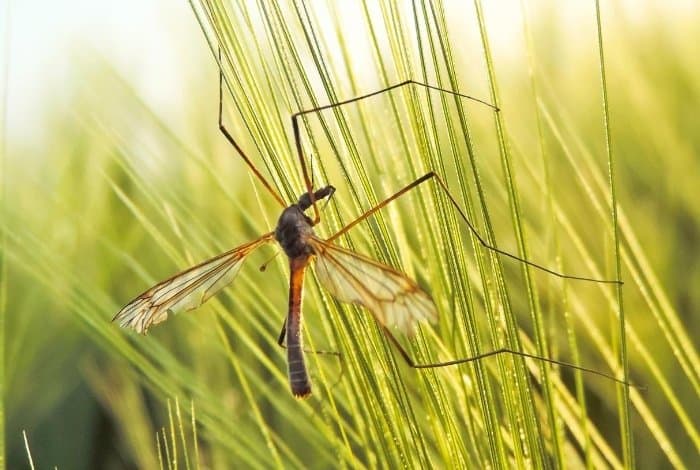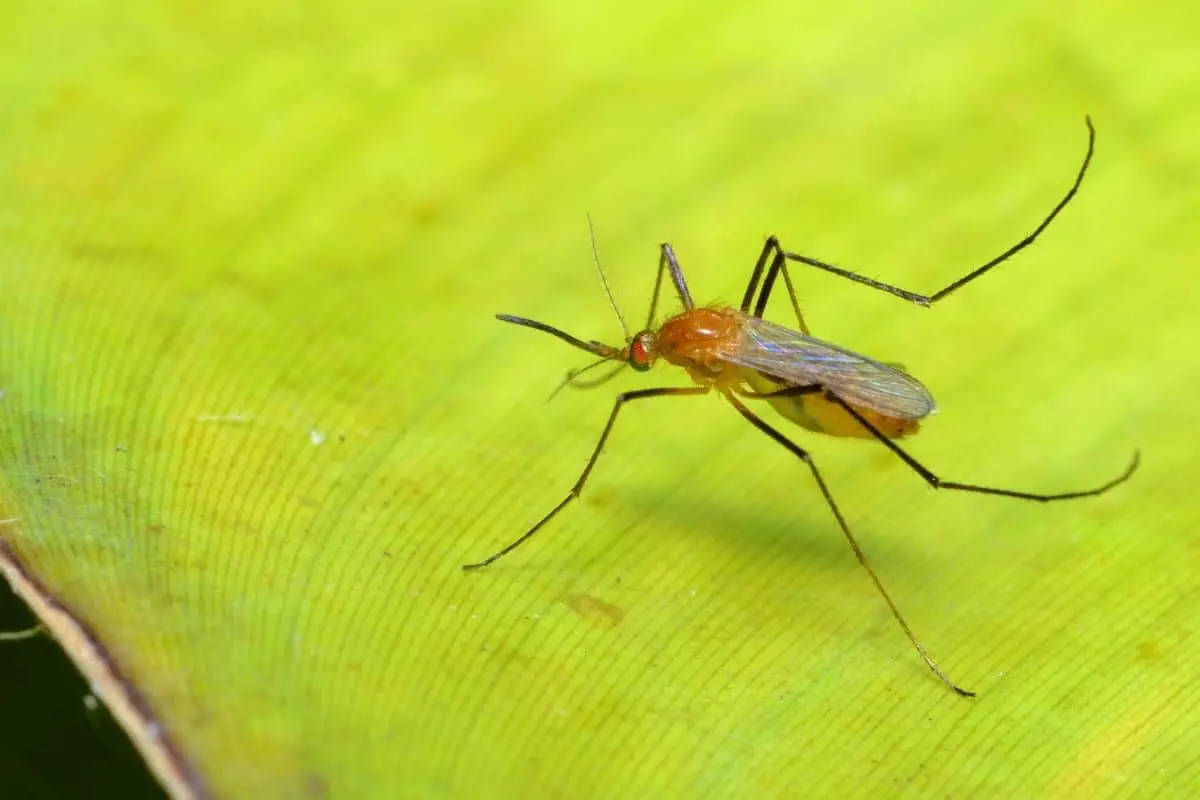Last Updated on January 6, 2022 by
If your yard is suffering from cane flies issues, it will be reasonable for you to go for some control measures. Finding how to get rid of crane flies may be on your mind. This is why we have put together this guide for you.
Crane flies may not harm you but they can be pretty annoying. Crane flies are not mosquitoes but they are sometimes referred to as ‘mosquito hawks.’
Where Do Crane Flies Thrive and What Do They Eat?
Crane flies thrive in damp areas and their larva lives in damp areas. Although, a couple of the crane flies species drink nectar and serves as pollinators. Most of them do not eat anything as adults. Most of them sustain themselves mainly on what they ate and the food stored during their larva phase.
The adult crane flies only constitute a nuisance. Also, adult crane usually lives for a couple of days and dies.
But what you should mostly be wary of is their larva. When those annoying leggy flies lay their eggs, their subsequent larva can be a tragedy to your yard. Their larva can eat the crown of your leaves and leave some unattractive patches to your grasses. They can also feed on your plant roots.
Read about A Guide To Eliminating Hoverflies
Control Measures: Getting Rid of Crane Flies
Most adult crane flies are only annoying but they are not harmful to you or your plants. Therefore, control measures are focused on getting rid of crane flies’ larva.
Natural Methods
- Keep your Lawn Dry: Since most crane flies thrive in a wet environment, try as much as possible to keep your lawn dry. Avoid wetting your grass too much, only sparingly.
- Lawn Aeration: lawn aeration allows your lawn to get enough air. This makes the root of your soil more porous, allowing easy movement of water. This will reduce water clog.
- Get Rid of your Lawn Thatch: eliminate that dead grass that has built up in your lawn. Those thick thatch on your lawn can hinder your plant from getting a good air and obstruct water movements.

Getting Rid of Crane Flies through Rodents
Another way of getting rid of crane flies is by introducing rodents as predators. Introduce predators like birds to your lawn. Set up your lawn in an encouraging way for birds to come to visit your property.
The birds will find the crane flies larva and feed on them.
Chemical Method
Applying some chemicals are also helpful. There are various chemical products to apply on your lawn to eliminate crane flies’ larva. Let’s check out some of the chemical applications:
- Nitrogen: applying some nitrogen on your lawn is one of the methods of getting rid of the crane flies’ larva.
- Insecticides: insecticides containing pyrethroids and imidacloprid are well-known elements used for getting rid of the larva.
Sevin Lawn Insect Killer Granules
- Natural Insecticides: there are many brands you can find in the market with natural ingredients approved for organic gardening.
Safer Brand Ready-to-Use End All Insect Killer
An adequate and more successful process will be achieved when you apply these chemicals around late summer or early fall. This period is when the eggs hatch.
Inspecting your Lawn for Crane Flies
Inspecting your lawn for patched areas is advisable. When you identify the patched area, go ahead and search for any larva. If you find any larva, that’s a sign you got to act. Start treatment as soon as possible.
Leave a comment below if you still have some questions.
FAQs
How do you keep crane flies away?
The most common way to keep crane flies away is to not let rain sit on the ground. If it's cold outside, you might want to cover up outdoor furniture or outdoor plants with something like a tarp or plastic sheeting before it starts raining since crane flies can't fly through air temperatures below freezing. In addition, moving firewood away from the house and stacking it on the opposite side is also an effective way to keep them out of your home.
How long is crane fly season?
For example, crane fly season in the United States only lasts from mid-May to mid-July. This is one of the longest seasons for crane fly fruit flies.
Crane fly season varies across regions and countries, but usually lasts for about four to five months.
What causes a lot of crane flies?
Crane flies are not considered as a harmful insect, but they can cause a lot of trouble if they live in your house.
Crane flies are well known for their ability to resist very hot temperatures. They are unique in that the females lay their eggs on the ground and the larvae develop underground where the temperature will be lower.
Should I kill crane flies?
The simple answer to this question is yes. There are many reasons why you should kill crane flies in your home or workplace. The first reason is that they are pesky insects that torment people with their constant buzzing in our ears and they can make us itch when they land on our skin. The second reason is because they carry disease and when left unchecked, these infections, such as typhoid fever, can spread throughout the building or home quickly.
How long do crane flies last?
Crane flies exhibit a life cycle that is different from most other insects. Crane flies are born in the water and then shed their aquatic larval stage to become terrestrial.
The crane fly is not a particularly long-lived insect and usually lives for about two weeks at most. This is due to the way it reproduces, as they undergo what we call incomplete metamorphosis. This means that there is no pupal stage and some of the larval features remain on the adult's body.
The female crane fly lays eggs in moist ground where they hatch into larvae shortly after. They then go through three molts over the next 10 days until they reach adulthood and reproduce before dying shortly afterwards.
Do crane flies lay eggs?
Yes, crane flies do lay eggs. Crane flies are insects which belong to the order Diptera and family Tipulidae. The females lay their eggs in water or wet soil, while males use their genitals to produce a lump of semen on the female’s abdomen. They then release this egg mass onto vegetation or other water surfaces.
What do crane flies turn into?
The answer to this question is that crane flies are insects that undergo complete metamorphosis.
The larvae of crane flies look like small, legless grubs with a brown or blackish color.
During the next stage of their development, they exist as a pupa - which is also called a "chrysalis" if it's butterfly or "cocoon" if it's moth. The pupa doesn't have any legs or wings and its head is usually hidden beneath its body.
Finally, the adult crane fly emerges from the pupa case through a hole in one end of it.

Eunice is a gardener who loves to play in the dirt. She starts her day early in the morning, watering her plants and tending to her garden. She loves the smell of freshly cut grass and the feeling of sunshine on her back as she works. She‘s a master at creating beautiful flower arrangements and can often be found humming a tune as she tends to her plants. When she‘s not gardening, she loves to read books about nature and share her knowledge with others. Eunice loves gardening so much that she‘s even been known to talk to her plants!




